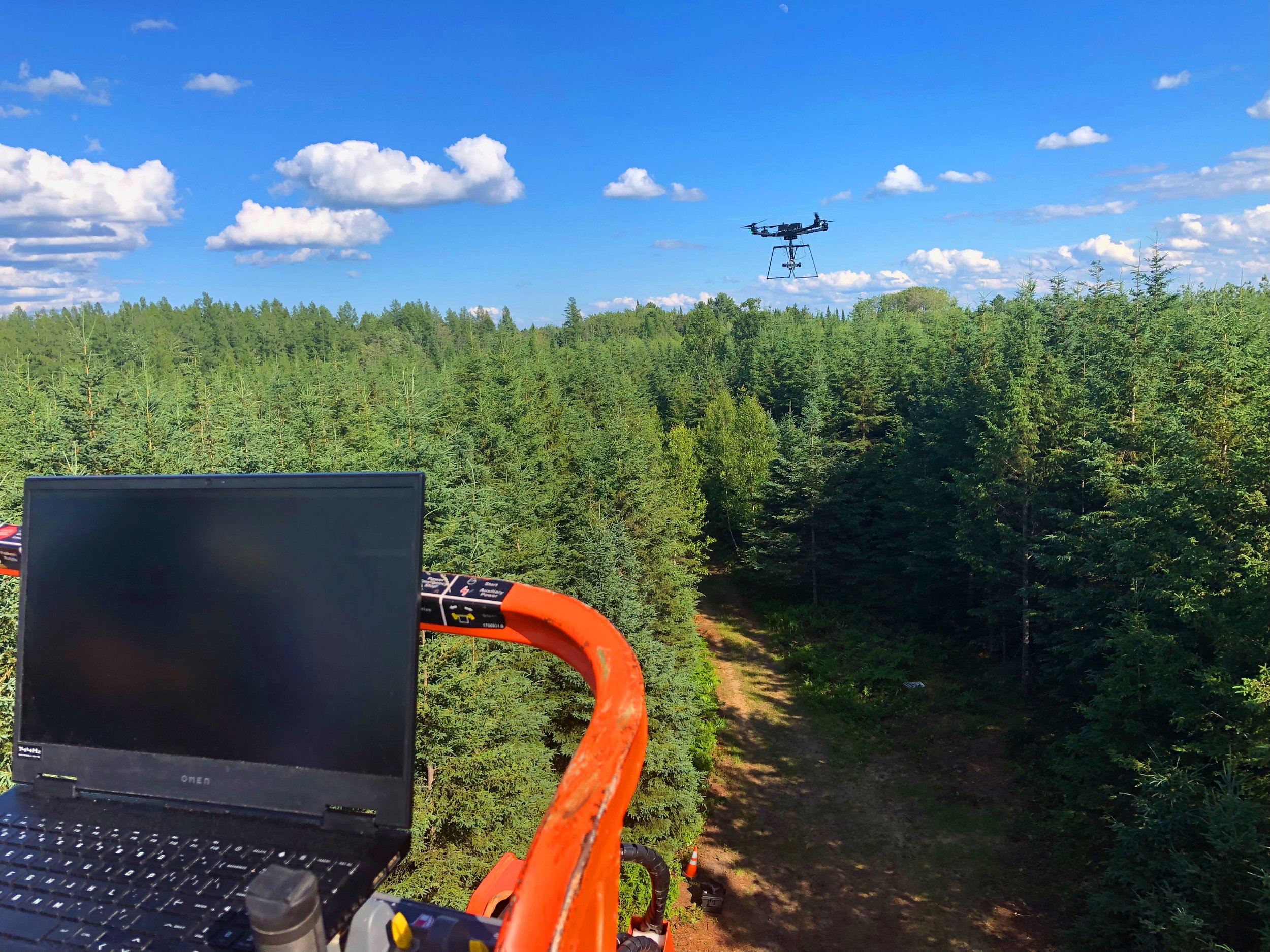
Our activities
We also aim to use the precision high-throughput phenotyping approach to emphasize the genotype x environment interaction on phenological changes and capture the effect of different environmental conditions on the phenotypic response.
We have a total of six experimental field sites located in contrasting environments, including tests with clonal populations that were already genotyped. Each NRCan site has 4-8k seedlings and 2k individual genotypes clonally replicated 2 to 4 times within each site and are already genotyped (9k SNPs) by NRCan.
Pickering (ON, warm and dry)
Pintendre (QC, dry)
Foret Montmorency (QC, cold and continuously under sawfly attack)
Each MFFP site represents clonal populations derived from somatic embryogenesis. These two tests share the same set of families and genotypes for a total of 3.2k varieties. These populations were genotyped (5K SNPs) for the genomic selection program of the MFFP.
Grandes-Piles (warm and humid)
St. Modeste (colder and less precipitation)
To assess the adaptive traits in these seedling white spruce breeding populations, we will assess:
Phenology as the most consistent and highly heritable trait for adaptation.
Tree Height and Crown Diameter
Ground measurements:
leaf spectral reflectance
chlorophyll fluorescence
photosynthetic pigment analysis





